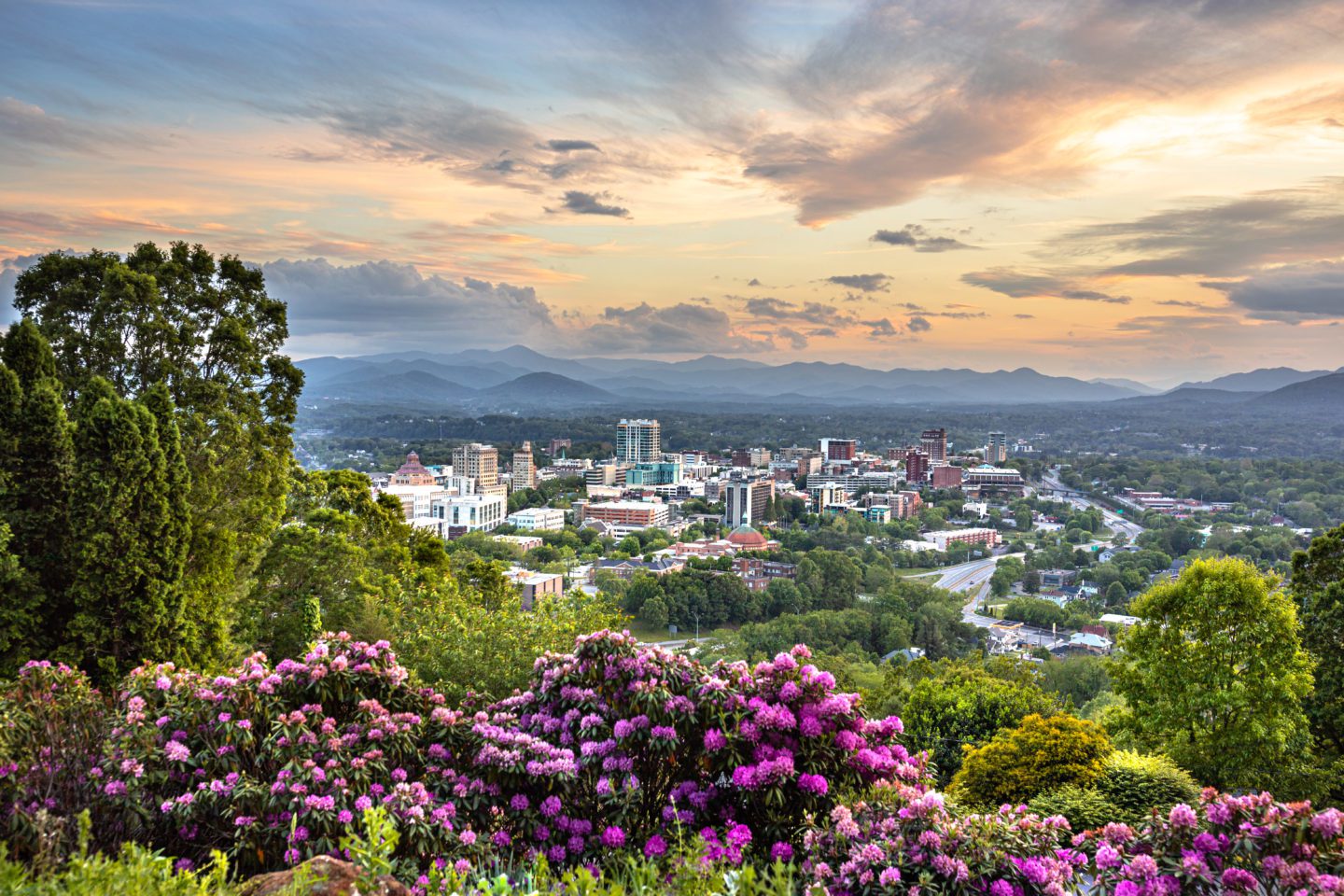
The state of North Carolina is one big celebration of the arts and folklife, but Asheville is the home of some of the world’s most amazing artisans representative of Appalachian culture and heritage along with heritage sites.
Front and center of Asheville’s arts and culture scene are African Americans, including a rich musical scene. Did you know Jermaine Dupri was born in Asheville? His contributions to American popular music include producing credits for some of the most memorable and prestigious names in show business from Usher to Mariah Carey to Janet Jackson and more. While he has Asheville roots, he is by no means the only Black Asheville native or notable resident to impress the world. Motown legend Gladys Knight lives on the outskirts of Asheville. Every time you hear the melodic strains of “Killing Me Softly,” think of Asheville-born Roberta Flack. Eunice Kathleen Waymon best known as Nina Simone attended Asheville’s Allen High School for Girls, where she honed her musical talents and graduated class valedictorian.
Asheville’s Black arts community embodies a marriage between Appalachian mountain culture and Black heritage. The arts present a diverse and dimensional picture of what it means to be Black and Appalachian from the craft artisans, artists and performers to the musical styles of bluegrass, the blues, classical and even hip hop. Take the Hood Tour of “The Block” to get a feel for and learn more about Asheville’s Black past to understand its present and future. Before you arrive, read “Reclaiming Black History & Culture” to learn about the area’s rich Black history.
If you’d like to take a tour at your own pace, we suggest the James Vester Miller Trail. This free, self-guided tour takes you to historic buildings throughout Asheville’s “East End” created by James Vester Miller. This master brick mason was once enslaved before starting his own construction company and building some of the area’s most iconic buildings, including several churches, the Asheville Municipal Building, and the YMI, pictured above.
An organization that is unique and celebratory in its focus is Different Strokes Performing Arts Collective, a non-profit organization committed to making theater, building community, facilitating awareness, and changing the world, one play at a time. Their first play for the 2022-2023 season is Monsters of the American Cinema by Christian St. Croix, which premieres in June. (Note: American character actor, Christopher Eugene Chalk, was born and raised in Asheville.)
SoundSpace@Rabbit’s is another business entity that is located in the heart of a historic Black neighborhood, South Slope (as it is now known). The owners took a former Green Book historic property,
, and turned the tourist court into practice and rehearsal spaces for musicians. Sometime this year, they will open a restaurant, Areta’s Soul Food, on the premises as a nod to Rabbit’s Cafe’s longtime employee. Her nephew chef Clarence Robinson is leading the project. An art gallery space is planned above the restaurant.
“Cubist Parade” – Roldan Rendon
The mural art of Joseph Pearson figures prominently throughout the city, including inside of Benne on Eagle. Mural art can be found all around Asheville. Sunny Point Café has a mural of the late culinarian Edna Lewis adorning their building. Murals can be found in the walkable River Arts District as well as downtown. You will see them in the brewery district of South Slope, a formerly Black neighborhood. Murals are a part of the city’s narrative, which can be explored on the South Slope Mural Trail Tour.
If museums are your thing, this June the Asheville Art Museum will be exhibiting American Perspectives: Stories from the American Folk Art Museum Collection. The traveling exhibit on loan from the American Folk Art Museum, NY, features American folk and self-taught artists. Two Black artists featured are David Drake (ca. 1800–ca. 1870), a formerly enslaved man in Edgefield SC who was able to create incredible pottery for practical use that he sometimes signed. And there are the wooden quilts by Jean-Marcel St. Jacques (b. 1972). The museum has holdings by Jacob Lawrence and North Carolinian Romare Bearden. The University of North Carolina Asheville had the exhibit Black in Black on Black: Making the Invisible Visible, which featured the art of Ann Miller Woodford, Viola Spells, and Ronda Birtha. (You can purchase the work of Ann Miller Woodford online at Ann’s Tree and Viola Spells’ work can be found in the River Arts District at ZenobiaStudio.)
Noir Collective AVL is a shop featuring the work and products of local Black artists and makers. Located on The Block, a formerly Black neighborhood and business district, Noir Collective is a gathering place housed next to a coffee house. Additionally, Word on the Street is a local non-profit for Black and Brown youth to learn more about creative expression and sell their art. You can visit their online store to support them.
Stay connected by subscribing to or bookmarking the Explore Asheville events calendar to stay up-to-date on events and other Black cultural activities in the area to add to your itinerary.
Hours and services may be impacted by COVID-19. Please visit the links associated with each to learn more about their current hours of operations, current offerings, and policies.
6


